Join More Than 50,000+ Subscribers and get latest camera news and rumors
NEW CAMERA VIDEOS ON YOUTUBE
|
By admin, on October 15th, 2024
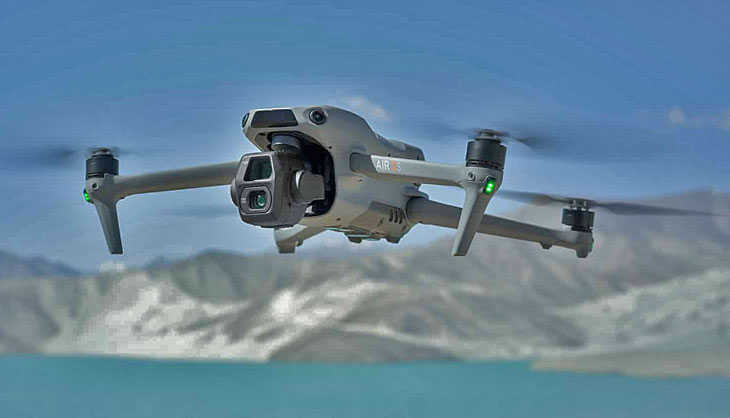
DJI announces the new DJI Air 3S dual-camera drone. Take a look at the new features inside this $1000 zone, which is said to be a minor refresh of the DJI Air 3.
The biggest upgrade we are able to witness in the new DJI Air 3 is the introduction of a large 1-inch sensor. The secondary camera has a 1/1.3-inch sensor for more flexible shooting. it uses a new Sony-made 50 MP 1-inch sensor, with a new panoramic mode of 13,000 x 6,500 pixels, providing ultra-detailed images of landscapes.
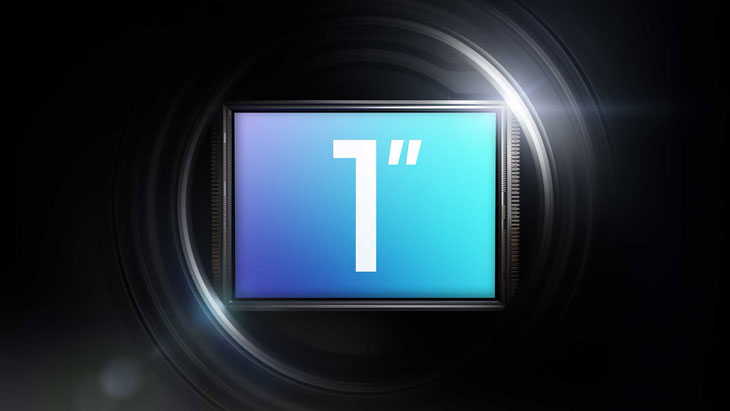
Now, this 1-inch sensor-based camera uses a 24mm equivalent focal length as the main camera, and the telephoto lens, which has 3x optical zoom or 72mm full-frame equivalent, uses a 1/1.3-inch sensor.
Another major update is the introduction of LiDAR for obstacle avoidance and 42 GB of internal storage. As we know, the predecessor Air 3 was limited to only 8 GB of internal storage, making this a welcome update.
Price and Availability
The DJI Air 3S is available to buy now,
DJI RC-N3 controller, costs $1,099. – B&H Store
Fly More kits cost $1,399 and $1,599
By admin, on October 15th, 2024
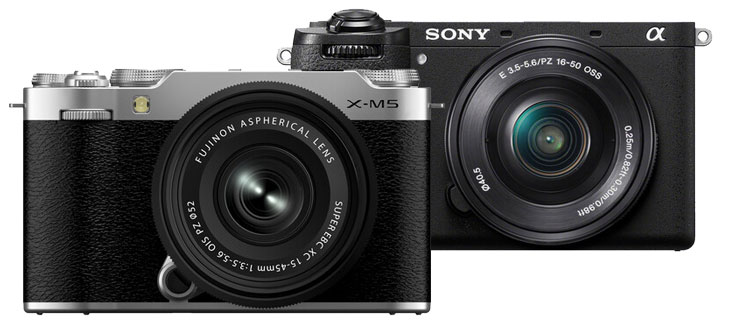
Let’s compare the Fuji X-M5 versus the Sony A6700 camera. We have compared the photographic & videography features in a separate table, so you can easily understand which camera is best for you.
If you are a photographer, which camera should you buy? Again, if you are a content creator, videographer, or wedding filmmaker, which camera should you choose?
Take a look at the specification comparison table below, where we have highlighted the major differences between the two cameras. They also have some similarities, but the good thing is that the Fuji X-M5 camera is able not only to compete but also to uplift the competition bar by upscaling the core specifications.
Fuji X-M5 vs Sony A6700 – 15 Major Differences for Photographers
| Feature |
Fuji X-M5 |
Sony A6700 |
| Sensor Resolution |
26.1 MP APS-C CMOS |
26 MP APS-C Exmor R BSI CMOS |
| Image Processor |
X-Processor 5 |
BIONZ XR |
| ISO Range (Photography) |
160 to 12,800 (Extended: 80 to 51,200) |
100 to 32,000 (Extended: 50 to 102,400) |
| Autofocus Points (Photo) |
425 Phase Detection Points |
759 Phase Detection Points |
| Autofocus Sensitivity |
-7 EV |
-3 EV |
| Continuous Shooting |
Up to 30 fps (Electronic, cropped) |
Up to 11 fps (Mechanical & Electronic) |
| Viewfinder |
No Viewfinder |
2.36M-dot OLED Viewfinder |
| Shutter Speed (Mechanical) |
1/4000 to 30 seconds |
1/8000 to 30 seconds |
| Mechanical Shutter |
Yes |
Yes |
| Image Stabilization |
NA |
5-Axis In-Body Image Stabilization (IBIS) |
| Sensor Type |
Standard CMOS |
Backside Illuminated (BSI) CMOS |
| Weather Sealing |
Yes (Dust & Water Resistant) |
Yes (Dust & Moisture Resistant) |
| Battery Life (Stills) |
Approx. 460 shots |
Approx. 570 shots |
| Weight |
355g (Body Only) |
493g (Body Only) |
| Memory Card Slot |
Single SD UHS-I Slot |
Single SD UHS-II Slot + CFexpress Type A |
Quick Analysis of Specification Differences between the two
The core specifications of the Fuji X-M5 camera look very impressive when compared with the Sony A6700 camera.
If you are a photographer, then of course you will miss the sensor-shift image stabilization in the Fuji X-M5, which is present in the Sony A6700.
Having image stabilization in your camera is really important if you shoot images in low-light environments. The image sensor compensates for hand movements even when you are using a slow shutter speed, resulting in neat and clean images.
Another feature that will help the Sony A6700 camera is the high ISO range, which is expandable from 50 up to 102400.
But wait, we still have some significant differences that might affect your choice. Another big difference for photographers to consider is the continuous shooting speed. If you don’t want any rolling shutter effect visible in your images, you have to use the mechanical shutter, as the electronic shutter can cause rolling shutter effects, especially with non-stacked sensors.
Autofocus Sensitivity and Tracking
Finally, let’s talk about the autofocusing systems of both cameras. We have seen the autofocus sensitivity difference between the two. If you compare them, the Fuji X-M5 camera looks very impressive with -7 EV autofocus sensitivity against the A6700 camera, which has -3 EV autofocus sensitivity. But this autofocus sensitivity only works once to acquire the autofocus point in extremely low-light situations.
Now, let’s consider a situation where quick moment-to-moment focus is needed. In this case, the Fuji X-M5 may focus more quickly compared to the A6700, due to its AF sensitivity. However, when we talk about autofocus tracking performance, due to the higher number of phase-detect autofocus points present in the Sony sensor—approximately 759 compared to Fuji’s 425—the tracking performance of the Sony A6700 sensor will be better than the X-M5.
So, we have two differences here. First, autofocus acquisition is better in the Fuji, but at the same time, the autofocus tracking performance is better in the Sony. Generally, most autofocus modes rely on the tracking performance of the camera, not on the acquisition part, so I would give a slight advantage to Sony in terms of tracking performance.
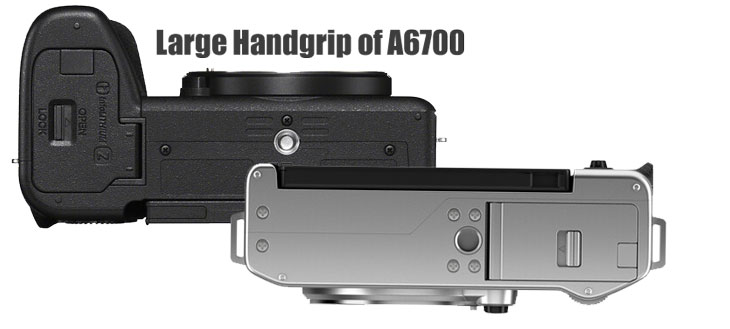
Design and Battery Life
Finally, let’s talk about the design part of both cameras. The Sony A6700 camera hand grip is deeper and much better compared to the Fuji X-M5. At the same time, we have a dedicated OLED viewfinder in the body of the Sony A6700 camera, which helps photographers who are used to using optical viewfinders from DSLRs. So, more or less, if we talk about ease of use and digital body design, the A6700 camera is more user-friendly.
At the same time, if we talk about battery backup, the Sony offers a bigger battery, resulting in more shots per charge—approximately 570+, whereas in Fuji, you are getting around 460. So yes, we do have some differences.
Conclusion: The best camera for photographer
should you go with the Fuji X-M5 or the Sony A6700? We get some extra features from inside to out with the Sony A6700 camera. Have a look:
The positive features of the Sony A6700 include the presence of a sensor-shift image stabilization system, which helps capture clear images in low-light environments. At the same time, the wide ISO range, starting from 50, is completely absent in the Fuji X-M5. Additionally, the A6700 offers a bigger battery life, which makes it a better option for professional photographers.
Not only that, but we also have a very large range of E-mount lenses from Sigma, Tamron, and many other brands. Although the Fuji X-mount is also open, it is not as big or broad as the E-mount at the moment, even though there are many options in X-mount.
Compared to the X-M5, we do see some advantages like autofocus sensitivity and continuous shooting speed. So, if you really want a camera with fast continuous shooting speed and don’t care much about the ISO range, image stabilization system, battery grip, or battery life, then the X-M5 might be a good option. However, for a photographer, we highly recommend the Sony A6700.
Fuji X-M5 vs Sony A6700 – 15 Major Video-Related Differences
| Feature |
Fuji X-M5 |
Sony A6700 |
| MAX Video Resolution |
6.2K up to 30 fps |
4K up to 120 fps |
| Slow-Motion Video |
1080p at 240 fps |
4K at 120 fps, FHD at 240 fps |
| Video Codec |
H.264/H.265 (HEVC) |
H.264/H.265 (HEVC), XAVC S-I |
| Video Bitrate |
400 Mb/s |
600 Mb/s |
| Video Recording Limit |
50 minutes in 4K |
No Recording Limit |
| Log Profiles |
F-Log, F-Log 2 |
S-Log 3, S-Cinetone |
| Autofocus Points (Video) |
425 Phase Detection Points |
759 Phase Detection Points |
| Autofocus Features |
Face/Eye Detection |
Real-time Tracking, Eye AF for Video, AI framing |
| External Recording |
4:2:2 10-bit via HDMI |
4:2:2 10-bit via HDMI |
| Viewfinder for Video |
No EVF |
Yes, 2.36M-dot OLED Viewfinder |
| Display Type |
3-Way Tilting LCD |
Fully Articulating LCD |
| Video Stabilization |
Electronic |
5-Axis IBIS + Active Mode for Video + Gyro |
| Audio Inputs |
3.5mm Mic Jack, 3.5mm Headphone Jack |
3.5mm Mic Jack, 3.5mm Headphone Jack |
| Mobile Streaming |
No |
Yes (IP Streaming 4K) |
video core specifications
Let’s compare the video core specifications between the Fuji X-M5 and the Sony A6700 cameras.
We have an open gate option in the Fuji X-M5, which videographers will love, especially for professional filmmaking, allowing them to decide the format and ratio for an entire scene. It’s better to record in open gate. In addition, we have options like Full HD mode at 240 frames per second for capturing slow-motion videos.
However, if you compare the X-M5’s features against the Sony A6700, you will miss the higher-resolution open gate mode. But aside from that, the Sony A6700 offers 4K @ 120 frames per second and can also record Full HD videos at 240 frames per second. The bitrate is approximately 600 Mbps, which is better than the X-M5’s 400 Mbps, even though Fuji offers a 6.2K open gate recording option.
A higher bitrate means more color information, and this will definitely help Sony users a bit more. In addition, we have a dedicated AI chip in the Sony A6700, which enhances autofocus tracking performance in video mode, including AI-based auto framing.
The good news is that Fuji is also improving their autofocus modes in the new X-M5 camera. Similar to Sony, they have introduced a product feature mode in the X-M5, showing Fuji is slowly trying to compete with Sony’s features in the A6700 camera.
Aside from all these features, the Sony A6700 has a 2.36-million-dot electronic viewfinder, which may not directly help with filmmaking, but is still a useful feature. However, the biggest factor is the presence of a sensor-shift image stabilization system.
With sensor-shift image stabilization, we can use active mode in video on the Sony camera to achieve smooth and stable footage. Sony also offers a gyro-based image stabilization system, which can smooth out footage like a GoPro when processed with special software.
Conclusion – Best Camera for Video
When you compare all these features, the Sony A6700 looks more appealing. However, if you are a Filmmakers (Independent or Short Films) prefer the open-gate recording format, you can go with the Fuji X-M5. But if you’re asking which one is more usable and practical camera, for
- For Wedding Cinematographers
- For Traditional Videographers (Corporate, Documentaries):
- For Content Creators
The Sony A6700 is more usable, with its 4K 120 FPS mode, advanced autofocus tracking with a dedicated AI chip, and hybrid image stabilization, which is the better option. The Sony A6700 simply offers a more advanced set of features.
Final Recommendations:
- Fuji X-M5 is recommended for filmmakers who need open gate recording and prefer high-resolution control.
- Sony A6700 is a all-in-one all-rounder for content creators, wedding cinematographers, and traditional videographers, features advanced autofocus, 4K 120 FPS, and Excellent stabilization features.
Fuji X-M5 Price
Fujifilm X-M5 Body: £799 / €899- B&H Store
Fujifilm X-M5 + XC 15-45 Kit: £899 / €999 – B&H Store
Sony A6700 Price
Sony A6700 Body: $1398 B&H Store | Amazon.com
Sony A6700 with Kit Lens: $1498 – B&H Store and Amazon.com
Support us – Use or affiliate link Amazon.com | B&H Store for the next purchase u make – it helps us
By admin, on October 12th, 2024

So finally, we have the Fuji X-M5 camera’s full details coming straight from Fujifilm X-M5 official press release. From the available set of details, we can clearly see the specs that are about to arrive inside the Fuji X-M5 camera. We will only miss the mechanical image stabilization, although the Fuji processor delivers very effective images. Take look at the Makor specification of the camera
Fuji X-M5 Price
Fujifilm X-M5 Body: £799 / €899- B&H Store
Fujifilm X-M5 + XC 15-45 Kit: £899 / €999 – B&H Store
Fujifilm XF 500mmF5.6 Lens: £2,899 / €3,399
Fujifilm XF 16-55mmF2.8 II: £1,149 / €1,349
Fuji X-M5 Specification
- Weight: Approximately 355g (including battery and memory card).
- Dimensions: 111.9mm width, 66.6mm height, 38.0mm depth.
- Sensor: 26.1 MP back-illuminated X-Trans CMOS 4 sensor.
- Processor: X-Processor 5 for high-speed image processing.
- Film Simulation: 20 Film Simulation modes.
- Autofocus (AF): AI-based subject detection AF (animals, cars, etc.).
- Face/Eye Detection: Supports face and eye AF.
- AF Algorithm: Predictive AF algorithm for moving subjects.
- Video Recording: 6.2K/30P 4:2:2 10-bit internal recording.
- 4K Video: Supports 4K/60P recording.
- High-Speed Video: 1080/240P recording.
- Stabilization: Powerful digital image stabilization for both minor and large shakes.
- Built-in Microphones: Three microphones with selectable directivity (surround, front, back, front & back).
- Noise Reduction: Steady-state noise reduction for continuous frequency noise.
- Vlog Mode: Touch-based intuitive control for shooting.
- 9:16 Short Movie Mode: Easy vertical video capture for social media.
- Bit Rates: Supports 8 Mbps and 25 Mbps bit rates for video.
- Card Slot: SD card storage for internal recording.
- Design: Symmetrical dials with a compact X-series aesthetic.
- Auto Mode: Auto scene recognition for first-time users.
- Low Power Consumption: Optimized for long shooting times.
- Bird & Insect Detection: Special AF setting to detect birds and insects.
- Drone Detection: Detects drones under the “Airplane” setting.
- Display: Touch-sensitive LCD with improved icon placement.
- High AF Precision: Improved precision even in low-contrast environments.
Fuji X-M5 Full Press Release and Images
These specs highlight the Fuji X-M5’s compact design, high-quality video recording
FUJIFILM X-M5 Mirrorless Digital Camera
The lightest model in the current X series
Equipped with advanced features for both stills and video. Enjoy shooting every day with ease
October 14, 2024

TOKYO, October 14, 2024 – FUJIFILM Corporation (President & CEO, Representative Director: Teiichi Goto) announces the launch of the latest model of the mirrorless digital camera the “FUJIFILM X-M5” (X-M5). It is a new addition to the X Series of mirrorless digital cameras known for their compact and lightweight body and superior image quality based on the company ’s proprietary color reproduction technology.
The X-M5 is a mirrorless digital camera with a compact and lightweight body weighing approximately 355g*1 making it the lightest*2 camera in the X series. The X-M5 is equipped with a full range of functions, including subject detection AF that can detect moving objects such as animals and cars using AI and a 6.2K/30P movie recording function, making it possible to shoot both still images and movies with a single camera. Additionally, the design features the high-quality appearance characteristic of the X series. The X-M5 is the perfect camera for a wide range of users, from first-time digital camera users to photography enthusiasts, enhancing the joy of photography.
The X-M5 is a mirrorless digital camera equipped with the back-side illuminated 26.1-megapixel “X-Trans™ CMOS 4”*3 sensor and the “X-Processor 5” high-speed image processing engine, enabling high-quality image capture. A Film Simulation dial is located on the top surface of the warship to switch between “Film Simulation” modes, which allows users to enjoy various color tone expressions as if they were changing photographic film. The X-M5 is equipped with high-performance video recording functions such as 6.2K/30P 4:2:2 10-bit video onto an SD card inserted in the camera. In addition, its powerful digital image stabilizer and high-performance built-in microphone support comfortable video recording. As for the Vlog Mode, the newly introduced “9:16 Short Movie Mode” makes it easy to shoot vertical videos.
*1 Including battery and memory card.
*2 For current X series models.
*3 X-Trans is a trademark or registered trademark of FUJIFILM Corporation.
1. Product features
(1) Compact and lightweight body and product design that makes you want to enjoy shooting
▪ It weighs approximately 355g and measures approximately 111.9mm in width, 66.6mm in height, and 38.0mm in depth. The extremely lightweight and compact body for a mirrorless digital camera makes it easy to carry around and enjoy photography every day.
▪ Despite its compact size, the camera has the high-quality appearance of the “X series”. Symmetrically placed dials on the top surface of the warship section highlight the beauty of the camera.

▪The Film Simulation dial is conveniently placed on the lek shoulder of the top face. Users can easily switch between a total of 20 Film Simulation modes according to the subjects and scenes, making it easier to enjoy a variety of color tones in both still and moving images.
▪ The top right features a mode dial. In AUTO mode, the camera automatically recognizes the optimal shooting mode for the scene, allowing even first-time digital camera users to easily capture high-quality stills and videos.
(2) Equipped with a high-performance sensor and high-speed image processing engine to achieve high image quality and high-performance AF
▪ The X-M5 is equipped with the back-illuminated “X-Trans™ CMOS 4” sensor with approximately 26.1 megapixels and the latest high-speed image processing engine “X-Processor 5”. This allows for high image quality photography with low power consumption.
▪ The camera features the subject detection AF, developed with deep learning technology, in addition to the existing Face / Eye AF. AI is used to add the ability to detect animals, birds, cars, motorcycles, bicycles,
airplanes, trains, insects and drones*4
▪ The latest AF predictive algorithm provides high tracking performance for moving subjects and high precision AF in low-contrast environments.
*4 Set the Subject Detection Selng to “BIRD” when you want to detect insects and to “AIRPLANE” when you want to detect drones.
(3) 6.2K/30P video recording and other extensive video func^ons
▪ The X-M5 can record 6.2K/30P 4:2:2 10-bit video onto an SD card inserted in the camera, and also supports extensive video functions including 4K/60P and 1080/240P capability.
▪ The camera is equipped with powerful digital image stabilization. It is effective not only for minor camera shake but also for large shaking that occurs when shooting video while walking.
▪ For the first time in our digital camera lineup, three built-in microphones are equipped. You can choose from four microphone directivity options: surround, front, back, or front & back, depending on the situation. The camera is also the first to feature a steady-state noise reduction function, which reduces noise that continues to ring at a certain frequency, such as air conditioning noise.
▪ Vlog mode allows users to change shoo^ng conditions intuitively by touching the LCD. Improvements in the number and placement of icons make video recording even more intuitive. In addition, the new “9:16 short movie mode” allows users to easily shoot vertical videos popular on various social media and smoothly share the captured content.
▪ New bit rates of 8 Mbps and 25 Mbps have been added to the bit rates that can be selected in the “Media Recording Settings” when shooting video. This shortens the transfer time to external devices such as
smartphones, and contributes to shortening the ^me required to upload captured video directly to social media.
2. optional accessories
Cooling Fan “FAN-001″*5 (already on sale)
▪ This cooling fan can be attached to the rear panel of the camera body without a cable, supporting long hour shooting and video recording in a high-temperature condition. The power can be supplied to the fan from the camera body
Tripod Grip “TG-BT1″*6 (already on sale)
▪ This grip enhances mobility and camera’s hold while adding tripod functionality. Users can comfortably take self-portraits and low angle shots, where it is normally difficult to hold the camera in position. As a tripod, the TG-BT1 can be used for a wide range of love fujiru mors applications from group shots to tabletop still.
*5 Compatible models are FUJIFILM X-M5, FUJIFILM X-H2S, FUJIFILM X-H2, and FUJIFILM X-S20.
*6 Compatible models are FUJIFILM X-H2S (Ver.3.00 or later), FUJIFILM X-H2 (Ver.1.2 or later), FUJIFILM X-T5 (Ver.1.00 or later), FUJIFILM X-T4 (Ver.1.70 or later), FUJIFILM X-T3 (Ver.4.50 or later), FUJIFILM X-S20, FUJIFILM X-S10 (Ver. 2.60 or later), FUJIFILM X-T30 II (Ver. 1.20 or later), FUJIFILM X-T30 (Ver. 1.50 or later).
source of the press release and images credit FR.com
By admin, on October 11th, 2024
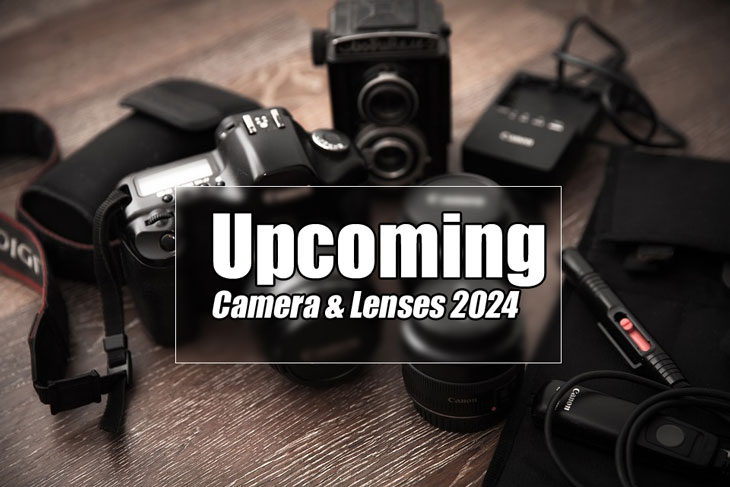
Please look at the list of upcoming cameras and lenses, and … let’s look at the list. Its look like
Upcoming Cameras
Fujifilm X-M5 camera (October 10-14)
Insta360 Ace Pro2 action camera (?)
DJI Air3S drone (October 10-15)
Upcoming Lenses
Fujifilm XF16-55mm lens (October 10-14)
Fujifilm XF500 fixed lens (October 10-14)
A summary of new Sony E-mount lenses that may be released:
Sony FE 24-70mm F2.0 GM, Release date to be determined.
Viltrox AF28mm F4.5 full-frame, released on October 14th.
Viltrox AF135mm F1.8 full-frame, released in October.
Viltrox new Pro F1.2 APS-C E prime lens, focal length between 27mm and 75mm, release date to be determined.
Viltrox AF35mm F1.4 Pro E full-frame, release date to be determined.
Viltrox AF50mm F1.4 Pro E full-frame, release date to be determined.
Viltrox AF85mm F1.4 Pro E full-frame, release date to be determined.
Viltrox AF35mm F1.2 LAB E full-frame, release date to be determined.
Viltrox AF50mm F1.2 LAB E full-frame, release date to be determined.
Viltrox AF85mm F1.2 LAB E full-frame, release date to be determined.
Meike AF55mm F1.8 ProE Full Frame, Released on October 17th.
Meike AF24mm F1.4 MIX E Full Frame, Release date to be determined.
Meike AF35mm F1.4 MIX E Full Frame, Release date to be determined.
Meike AF50mm F1.4 MIX E Full Frame, Release date to be determined.
Meike AF15mm F1.8 Pro E Full Frame, Release date to be determined.
Meike AF85mm F1.8 Pro E Full Frame, Release date to be determined.
Meike AF35mm F1.8 E Full Frame, Release date to be determined.
Meike AF24mm F1.8 Pro E Full Frame, Release date to be determined.
Meike AF23mm F1.4 E APS-C, Release date to be determined.
Meike AF16mm F1.4 E APS-C, Release date to be determined.
Laowa new automatic lens (?)
Shen Guang AF55mm F1.8 Z (?)
Camera Based Smartphones
vivo x200 series,
Xiaomi 15 series,
OPPO find X8 series,
By admin, on October 10th, 2024
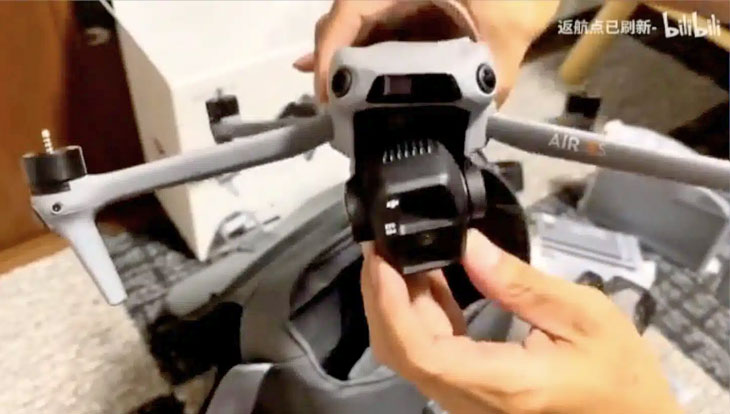
DJI’s Air 3S has been unveiled in a surprising unboxing video shared by one of the most famous Twitter handles OsitaLV . But the most important aspect is its impressive specifications. We have already listed all possible specs of the upcoming DJI Air 3S below. The official announcement is expected on October 15th at 9:00 a.m. EST, and we are eagerly awaiting it.
DJI Air 3S Specification
- Dual-camera system: 1″ wide-angle sensor + 1/1.3″ telephoto sensor
- 4K video recording at 60fps
- Slow-motion video at 120fps
- High ISO range for low-light: Up to ISO 12,800
- Maximum flight time: 45 minutes
- APAS 5.0 obstacle avoidance system
- Potential voice-activated control feature
- O3+ transmission system
- Max transmission range: 15 km (9.3 miles)
- Intelligent flight modes: ActiveTrack, Spotlight, etc.
- Advanced return-to-home (RTH) system
- 4-axis gimbal stabilization
- 1080p live view feed at 60fps
- 8 GB internal storage
- Support for microSD cards
- Wind resistance: Up to 38.5 km/h
- Intelligent battery with fast charging
- Compact and foldable design
- Remote controller with built-in screen
- Expected launch date: October 15, 2024
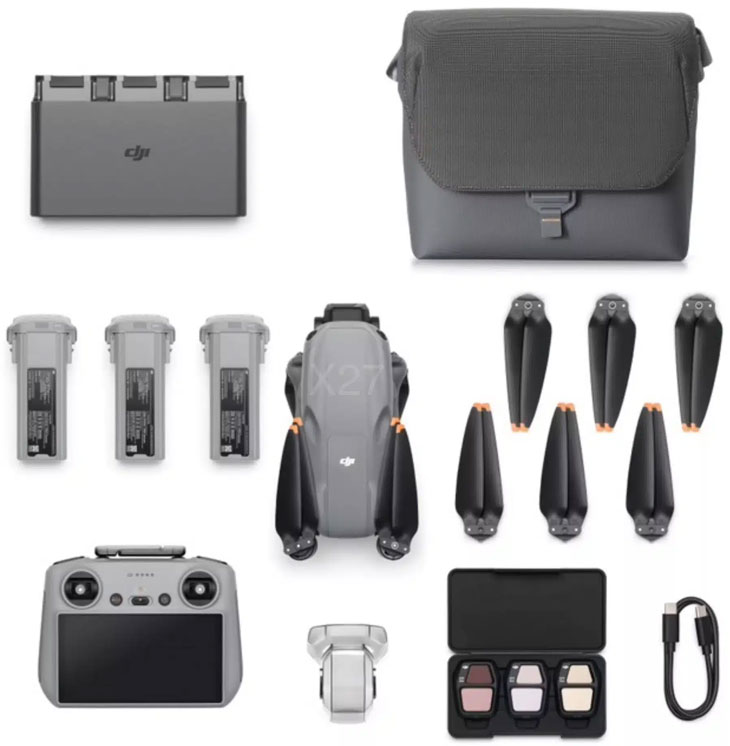
Stay tuned more updates are coming
source twitter OsitaLV
By admin, on October 9th, 2024
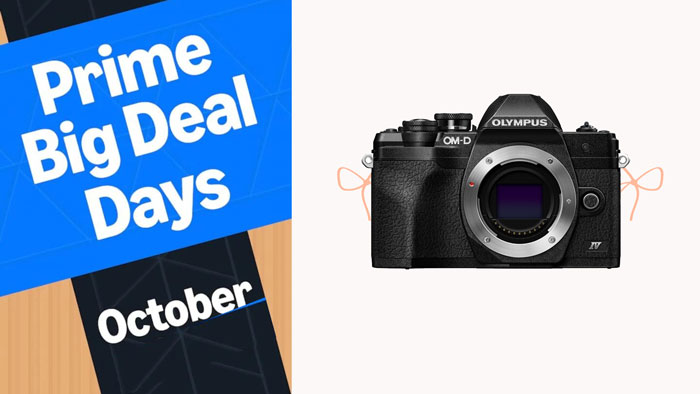
Finally, the Olympus E-M10 Mark IV has finally made its entry in the PRIME DEALS PAGE of OCTOBER 2024. Take a look at the price difference between the B&H Store and AMazon.com
OLYMPUS E-M10 Mark IV Price at the Time of Writing this Article
1. OLYMPUS E-M10 Mark IV BODY Price $ 589 at Amazon.com and $699 at B&H Store
also check out the Sony FX3 Deal & Panasonic G95D Price Drop – Amazon Prime Day Deal
Support us – Use or affiliate link Amazon.com | B&H Store for the next purchase u make – it helps us
By admin, on October 9th, 2024
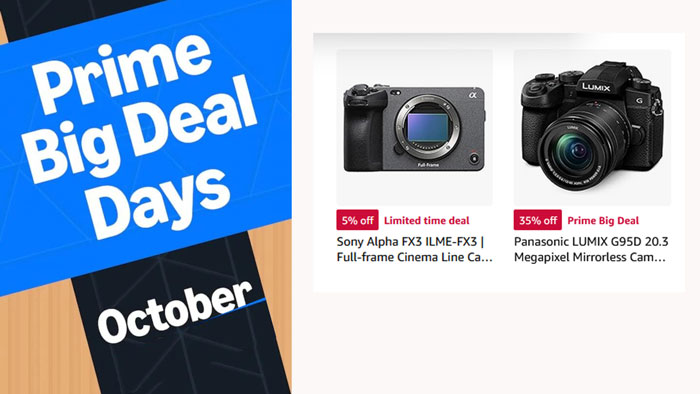
Amazon Prime Day Deals just started, right now I noticed two deals running, let’s have a look at the live deals
At the time of writing this article
- Sony FX3 – The camera is available at $3698 at Amazon.com and at $3698 at B&H Store
- Panasonic G95D (NEW OLED Display) is available at $649 at Amazon.com and Panasonic G95 available at $697 at B&H Store
Here is the link to the Amazon Prime Camera Deal Page
Support our website – Get products from our affiliates Amazon and B&H
Support us – Use or affiliate link Amazon.com | B&H Store for the next purchase u make – it helps us
|
KEEP THIS BLOG ALIVE - Support New Camera Buy Canon Lenses, Buy Music CD or Digital Camera at amazon it helps this site, and you do not pay anything extra, it is just a way to help support this site.

|
















